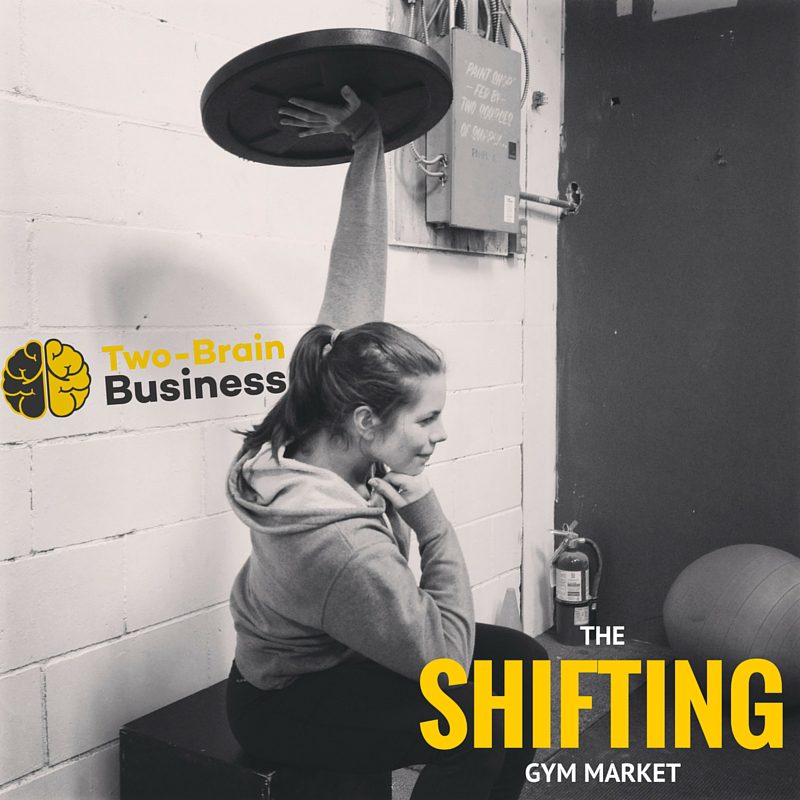In 2001, CrossFit.com launched. Greg faced a market that many of us believed was already overcrowded. All the new innovation came in the form of gadgets: BOSU balls and tornado balls and DVDs. But CrossFit blew it all apart. Instead of arguing against each little invention, Greg Glassman released an innovation that simply made every toy irrelevant.
Each new innovation passes through four stages of market adoption.
First, the “early adopters” jump on board because they’re attracted to novelty. They try things because no one else is doing it yet, or they’re simply the first to discover the idea. Amundson and Nicole Carroll adopted the methodology, and others like OPT adopted it when it came online.
Second, the “Early Majority” follows the early adopters. Less likely to take social or financial risks, the EM group dresses like the cool kids and listens to their music. They’re quick to jump on a new trend, but only after it’s been “cool-approved” by the real risk takers. With CFFMHI, I’d fall into this group. Many of the gym owners who affiliated between 2007 and 2012 would fall here. The brand hadn’t yet reached the majority of the population, and we liked the “counterculture” element.
Today, I believe we’re entering the third phase: the “Late Majority.” Brand awareness is high: anyone interested in exercise has heard of CFFMHI. This is the largest group by FAR, but also the least motivated to self-educate. Hallmarks of the Late Majority include price-shopping, less loyalty and less pre qualification (they haven’t researched what you’re selling, and rely on you to tell them how you’re going to solve their problem.)
If I wasn’t speaking one on one to dozens of gym owners every week, I probably would have missed this shift. It’s a huge change–it will affect how you spend your time as a gym owner–but it’s also not cut-and-dried. No obvious switch has been flipped, but gyms who embrace strategies aimed at the Late Majority are starting to excel, while those who depend on brand awareness are starting to wonder where all their leads have gone.
More than ever, it’s critical to have a robust revenue system, like the Stratified Model. Not sure if you have an “antifragile business?” Take the new Gym Checkup here. It’s free.
What does this all mean?
- People are less likely to attend a “free trial class.”
- People need to know how your service is going to solve their problem.
- They’re not going to research all options, but choose the first option that *might* work
- Retention data older than 18 months is irrelevant
- Your on boarding procedure should include more asking than telling
- Each “audience” (niche market) will require a different explanation of your service
- You might have to start explaining your service in a different way.
To summarize, far fewer people are going to start doing CVFMHI for its own sake. And that’s okay: luckily, it’s the best answer to most problems like weight loss, back pain and insulin resistance. The CrossFit brand is the most powerful on the planet, and YOU get to use it for a tiny licensing fee every year. You’re just going to use it in a different way in the future.
For example:
In 2013, an out-of-shape ex-athlete would find crossfit.com while looking for a way to get in shape. He would think, “that looks hard as hell. I love it!” Then he’d search for a local affiliate and sample their free class.
By 2015, that guy is probably coaching. Maybe he owns a box.
In 2016, an overweight guy thinks, “I need to lose weight if I’m going to meet a girlfriend. What are my options?” If your gym doesn’t tell him how you’ll help with weight loss, he won’t consider you. Because pills. And if he’s overweight, he might be hesitant to throw up in front of strangers, so a “free trial” won’t help. And he’s not looking for friends, so he won’t understand the power of community–yet. He’ll look for a group where he’ll fit in instead of standing out. “Motivated People Only” was once our beacon; now it’s our scarlet letter.
I don’t like it either, but Planet Fitness is collecting some of your best potential clients. It’s not always the price point: it’s the easy integration. They’re good at marketing because they look at their service from the client’s perspective. Shouldn’t we? Our service is better. We really change lives. And now we need to beat the globos at their own game.

